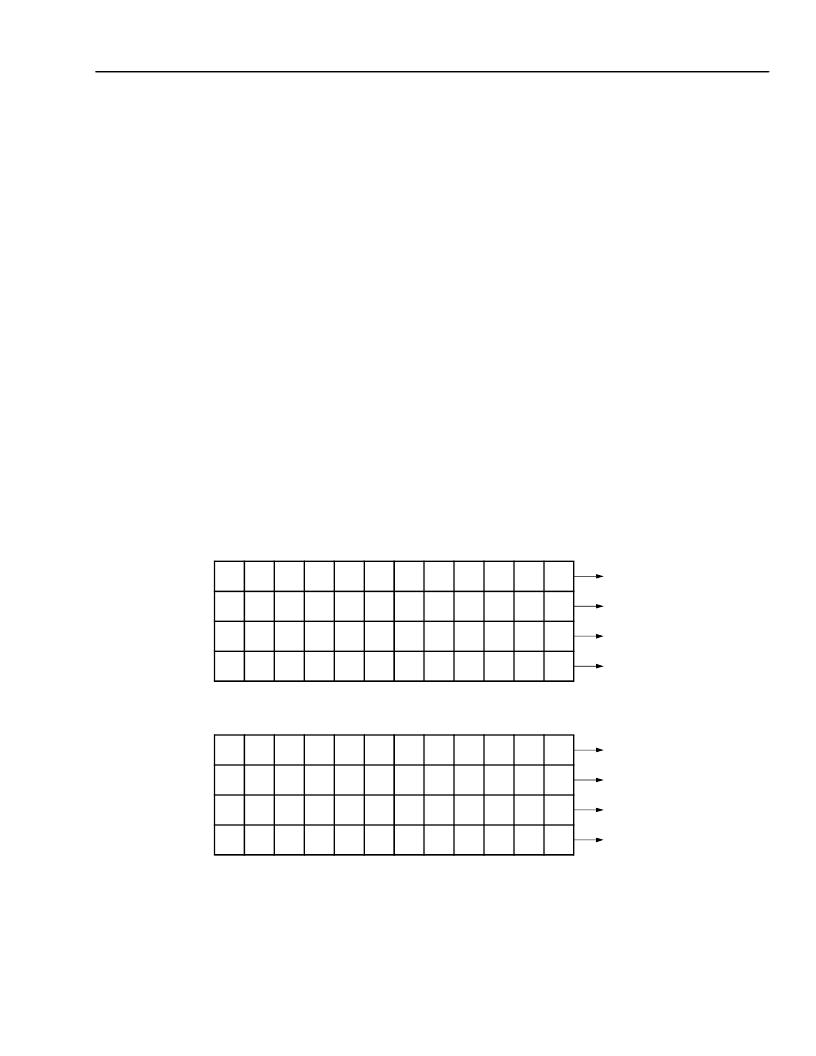- 您現(xiàn)在的位置:買賣IC網(wǎng) > PDF目錄383724 > ORT4622 Field-Programmable System Chip (FPSC) Four-Channel x 622 Mbits/s Backplane Transceiver PDF資料下載
參數(shù)資料
| 型號: | ORT4622 |
| 英文描述: | Field-Programmable System Chip (FPSC) Four-Channel x 622 Mbits/s Backplane Transceiver |
| 中文描述: | 現(xiàn)場可編程系統(tǒng)芯片(促進(jìn)文化基金)四通道x 622 Mbits /秒背板收發(fā)器 |
| 文件頁數(shù): | 15/90頁 |
| 文件大小: | 1915K |
| 代理商: | ORT4622 |
第1頁第2頁第3頁第4頁第5頁第6頁第7頁第8頁第9頁第10頁第11頁第12頁第13頁第14頁當(dāng)前第15頁第16頁第17頁第18頁第19頁第20頁第21頁第22頁第23頁第24頁第25頁第26頁第27頁第28頁第29頁第30頁第31頁第32頁第33頁第34頁第35頁第36頁第37頁第38頁第39頁第40頁第41頁第42頁第43頁第44頁第45頁第46頁第47頁第48頁第49頁第50頁第51頁第52頁第53頁第54頁第55頁第56頁第57頁第58頁第59頁第60頁第61頁第62頁第63頁第64頁第65頁第66頁第67頁第68頁第69頁第70頁第71頁第72頁第73頁第74頁第75頁第76頁第77頁第78頁第79頁第80頁第81頁第82頁第83頁第84頁第85頁第86頁第87頁第88頁第89頁第90頁

Lucent Technologies Inc.
Lucent Technologies Inc.
15
Preliminary Data Sheet
March 2000
ORCA ORT4622 FPSC
Four-Channel x 622 Mbits/s Backplane Transceiver
Backplane Transceiver Core Detailed
Description
(continued)
STM Transmitter (FPGA -> Backplane)
The STM has four STS-12 transmit channels which can
be treated as a single STS-48 channel. In general, the
transmitter circuit receives four byte-wide 77.76 MHz
data from the FPGA, which nominally represents four
STS-12 streams (A, B, C, and D). This data is synchro-
nized to the system (reference) clock, and an 8 kHz
system frame pulse from the FPGA logic. Transport
overhead bytes are then optionally inserted into these
streams, and the streams are forwarded to the HSI. All
byte timing pulses required to isolate individual over-
head bytes (e.g., A1, A2, B1, D1—D3, etc.) are gener-
ated internally based on the system frame pulse
(SYS_FP) received from the FPGA logic. All streams
operate byte-wide at 77.76 MHz in all modes. The TOH
processor operates from 25 MHz to 77.76 MHz and
supports the following TOH signals: A1 and A2 inser-
tion and optional corruption; H1, H2, and H3 pass
transparently; BIP-8 parity calculation (after scram-
bling) and B1 byte insertion and optional corruption
(before scrambling); optional K1 and K2 insert; optional
S1/M0 insert; optional E1/F1/E2 insert; optional section
data communication channel (DCC, D1—D3) and line
data communication channel (DCC, D4—D12) inser-
tion (for intercard communications channel); scram-
bling of outgoing data stream with optional scrambler
disabling; and optional stream disabling.
When the ORT4622 is used in nonnetworking applica-
tions as a generic high-speed backplane data mover,
the TOH serial ports are unused or can be used for
slow-speed off-channel communication between
devices.
Data received on the parallel bus is optionally scram-
bled and transferred to LVDS outputs.
Byte Ordering Information
The core supports quad STS-12 mode of operation on
the input/output ports. STS-48 is also supported when
received in quad STS-12 format. When operating in
quad STS-12 mode, each of the independent byte
streams carries an entire STS-12 within it. Figure 4
reveals the byte ordering of the individual STS-12
streams and for STS-48 operation. Note that the recov-
ered data will always continue to be in the same order
as transmitted.
5-8574 (F)
Figure 4. Byte Ordering of Input/Output Interface in STS-12 Mode
12
24
36
48
9
21
33
45
6
18
30
42
3
15
27
39
11
23
35
47
8
20
32
44
5
17
29
41
2
14
26
38
10
22
34
46
7
19
31
43
4
16
28
40
1
13
25
37
1, 12
2, 12
3, 12
4, 12
1, 9
2, 9
3, 9
4, 9
1, 6
2, 6
3, 6
4, 6
1, 3
2, 3
3, 3
4, 3
1, 11
2, 11
3, 11
4, 11
1, 8
2, 8
3, 8
4, 8
1, 5
2, 5
3, 5
4, 5
1, 2
2, 2
3, 2
4, 2
1, 10
2, 10
3, 10
4, 10
1, 7
2, 7
3, 7
4, 7
1, 4
2, 4
3, 4
4, 4
1, 1
2, 1
3, 1
4, 1
STS-12 A
STS-12 B
STS-12 C
STS-12 D
STS-12 A
STS-12 B
STS-12 C
STS-12 D
STS-48 IN QUAD STS-12 FORMAT
QUAD STS-12
相關(guān)PDF資料 |
PDF描述 |
|---|---|
| ort551 | Reed Switch(舌簧開關(guān)) |
| ord2210v | Reed Switch(舌簧開關(guān)) |
| ord2210 | Reed Switch(舌簧開關(guān)) |
| ord211 | Reed Switch(舌簧開關(guān)) |
| ord2211 | Reed Switch(舌簧開關(guān)) |
相關(guān)代理商/技術(shù)參數(shù) |
參數(shù)描述 |
|---|---|
| ORT4622BC432-DB | 功能描述:FPGA - 現(xiàn)場可編程門陣列 10368 LUT 204 I/O RoHS:否 制造商:Altera Corporation 系列:Cyclone V E 柵極數(shù)量: 邏輯塊數(shù)量:943 內(nèi)嵌式塊RAM - EBR:1956 kbit 輸入/輸出端數(shù)量:128 最大工作頻率:800 MHz 工作電源電壓:1.1 V 最大工作溫度:+ 70 C 安裝風(fēng)格:SMD/SMT 封裝 / 箱體:FBGA-256 |
| ORT551 | 制造商:Hasco Components International Corp 功能描述: |
| ORT551(1315) | 制造商:OKI Semiconductor 功能描述: |
| ORT551/10-15 AT | 功能描述:磁性/簧片開關(guān) 1 Form C 14mm AT 1015 OKI RoHS:否 制造商:MEDER electronic (Standex) 開關(guān)類型:Reed 觸點形式:1 Form A (SPST-NO) 觸點額定值:10 VA 操作范圍:10 At to 50 At 工作間隙: 磁鐵類型: 顏色: 端接類型:Axial 封裝:Bulk |
| ORT551-1/10-15 AT | 功能描述:磁性/簧片開關(guān) 1 Form C 14mm AT1015 Formed Ld OKI RoHS:否 制造商:MEDER electronic (Standex) 開關(guān)類型:Reed 觸點形式:1 Form A (SPST-NO) 觸點額定值:10 VA 操作范圍:10 At to 50 At 工作間隙: 磁鐵類型: 顏色: 端接類型:Axial 封裝:Bulk |
發(fā)布緊急采購,3分鐘左右您將得到回復(fù)。